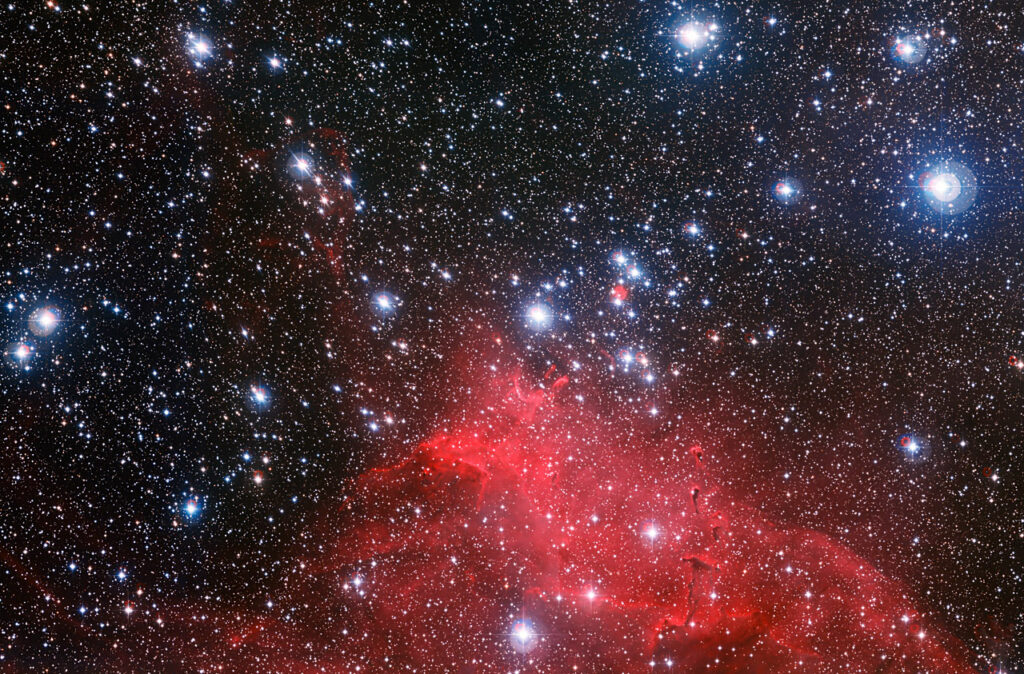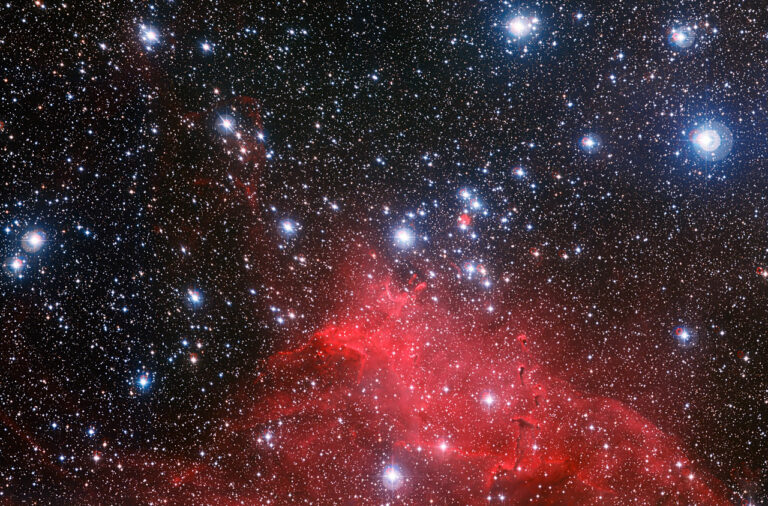Vibrant Stellar Landscape Unveiled by Youthful Stars
ESO astronomers have successfully captured an exceptional image showcasing the clouds surrounding the star cluster NGC 3572. This remarkable image reveals the intricate formations of bubbles, arcs, and peculiar features known as elephant trunks, which have been sculpted by the stellar winds emanating from this congregation of hot stars. The most luminous stars within this cluster are significantly more massive than our Sun and will ultimately conclude their brief existence through supernova explosions.
Typically, stars do not form in isolation, but rather alongside numerous siblings that originate from a single cloud of gas and dust. NGC 3572, situated in the southern constellation of Carina (The Keel), represents one such cluster. It comprises numerous young, hot, blue-white stars that radiate with brilliance and generate potent stellar winds, gradually dispersing the remaining gas and dust in their vicinity. The luminous gas clouds and the accompanying star cluster have been captured in a fresh image obtained by the Wide Field Imager on the MPG/ESO 2.2-metre telescope at ESO’s La Silla Observatory in Chile.
In the lower section of the image, a substantial portion of the molecular cloud that gave birth to these youthful stars remains visible. It has been profoundly influenced by the intense radiation emitted by its smoldering offspring. This radiation not only causes the cloud to emit a distinct hue but also sculpts it into remarkably intricate shapes, including bubbles, arcs, and the dark columns referred to as elephant trunks by astronomers.

The image showcases an intriguing feature – a small ring-like nebula positioned slightly above the center. The exact origin of this peculiar characteristic remains uncertain to astronomers. It is likely a dense remnant from the molecular cloud that gave rise to the cluster, possibly forming a bubble around a highly luminous hot star. However, some researchers have proposed the possibility that it could be an oddly shaped planetary nebula, representing the remnants of a dying star.
While stars within a cluster may be considered siblings, they are not identical twins. Although they share a similar age, they differ in terms of size, mass, temperature, and color. The life trajectory of a star is primarily influenced by its mass, thus a given cluster encompasses stars at various stages of their evolution. This provides astronomers with an ideal setting to study the process of stellar development.
These groups of young stars remain together for a relatively short period, typically spanning tens or hundreds of millions of years. Over time, they disperse due to gravitational interactions and the fact that the most massive stars have short lifespans. These massive stars rapidly deplete their fuel and ultimately meet their demise in explosive supernova events. Consequently, this contributes to the scattering of gas and stars throughout the cluster.
This article is republished from PhysORG under a Creative Commons license. Read the original article.
Do not forget to share your opinion with us to provide you with the best posts !




0 Comments